Using Rest Management APIS that are backed by Azure Resource Manager the following code adds a certificate from keyvault to ARM.
var secret = keyvaultClient.GetSecretAsync(vaultUri, options.CertificateName).GetAwaiter().GetResult();
var certUploaded = client.Certificates.CreateOrUpdateCertificateWithHttpMessagesAsync(
options.ResourceGroupName, options.CertificateName,
new Certificate {
PfxBlob = secret.Value,
Location = app.Body.Location
}).GetAwaiter().GetResult();
var appSettings = client.Sites.ListSiteAppSettingsWithHttpMessagesAsync(options.ResourceGroupName, options.WebAppName).GetAwaiter().GetResult();
var existing = (appSettings.Body.Properties["WEBSITE_LOAD_CERTIFICATES"] ?? "").Split(',').ToList();
if (!existing.Contains(certUploaded.Body.Thumbprint))
existing.Add(certUploaded.Body.Thumbprint);
appSettings.Body.Properties["WEBSITE_LOAD_CERTIFICATES"] = string.Join(",",existing);
appSettings.Body.Properties[$"CN_{options.CertificateName}"] = certUploaded.Body.Thumbprint;
var result = client.Sites.UpdateSiteAppSettingsWithHttpMessagesAsync(options.ResourceGroupName, options.WebAppName, appSettings.Body).GetAwaiter().GetResult();
the problem is that when loading it in the webapp
X509Store certStore = new X509Store(StoreName.My, StoreLocation.CurrentUser);
certStore.Open(OpenFlags.ReadOnly);
X509Certificate2Collection certCollection = certStore.Certificates.Find(
X509FindType.FindByThumbprint,
// Replace below with your cert's thumbprint
"0CE28C6246317AEB00B88C88934700865C71CBE0",
false);
Trace.TraceError($"{certCollection.Count}");
Console.WriteLine($"{certCollection.Count}");
// Get the first cert with the thumbprint
if (certCollection.Count > 0)
{
X509Certificate2 cert = certCollection[0];
// Use certificate
Console.WriteLine(cert.FriendlyName);
}
certStore.Close();
it is not loaded.
If I instead upload it using the portal, everything works as expected.

I also noticed that the certificates uploaded in the portal do not exist in ARM, only the certs added with the code in the start of the post exists.:

So what do we need to do to make a certificate available to webapp that do not involve manual uploading to portal?